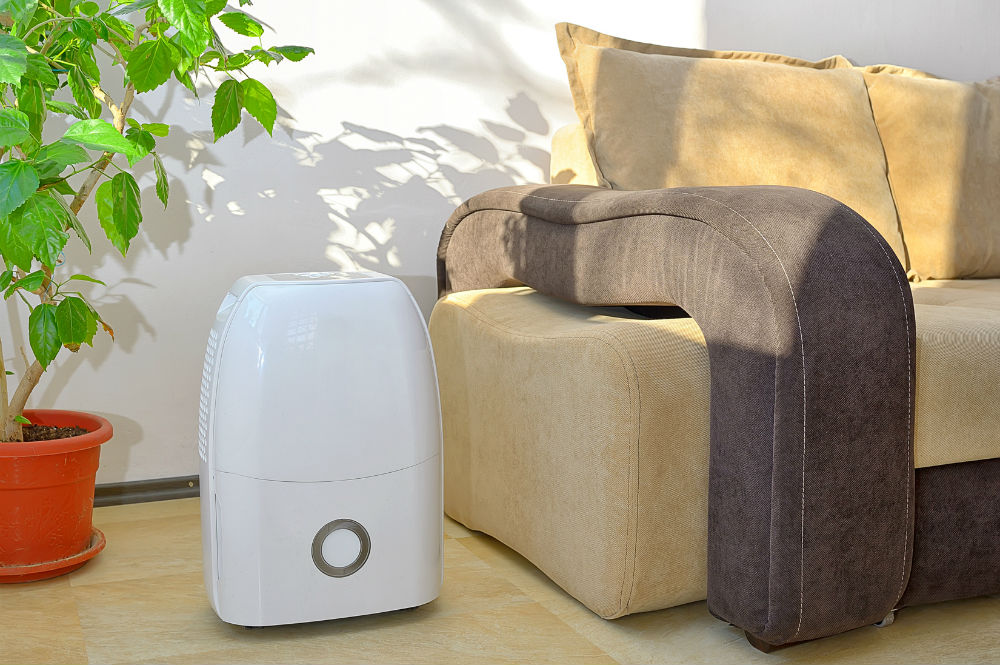So, you’ve learned all about the amazing benefits of owning a dehumidifier, and you decided to go out and get one.
For a while, it worked perfect—your allergies cleared up and your house was kept cool and dry.
However, recently, you’ve noticed that your dehumidifier is running, but it’s no longer collecting water.
When this happens, it can be quite frustrating, and you’ll find yourself asking,
“Why is my dehumidifier no longer collecting water?”
In this article you’ll learn about the potential causes of this issue – and how to correct, if needed.
What is going on with your dehumidifier?
A dehumidifier is a machine that takes the humidity from the air, making your home dry and much easier to live in. There are two major types of dehumidifiers:
- Refrigerant: A refrigerant dehumidifier has refrigerated coils inside of it, which help to remove the humidity from the air. The humid air runs through the machine and the coils trap the moisture. The air is then blown back into the room—warm and dry.
- Desiccant: A desiccant dehumidifier uses a chemical known as desiccant to pull the humidity from the air. This chemical absorbs the moisture and then releases the air back into the room.
Here are a few reasons why your dehumidifier is not collecting water anymore.
The air is not humid enough
If the relative humidity in your room is not very high, then there is little to no moisture for the dehumidifier to collect. The relative humidity is dependent upon the air temps inside of your home/room versus outside. If the temp is too low, compared to the level of humidity, there is little to no moisture to be collected in your dehumidifier.
Chances are, when you first turned on your dehumidifier, it collected lots of moisture from the air. That’s because it was pulling all of the excess water from the general area including the walls and ceilings. Once that process was complete, the only thing the dehumidifier needs to do now is maintain/regulate the humidity level. Since so much was already collected, there’s really not that much humidity left in the air, so the unit is likely to cease collection of water at some point.
The temperature is too low
In some cases, your dehumidifier may need to be at a higher temperature to function properly. Typically, when the temperature is about 65° Fahrenheit, the coils inside of the unit will freeze, and ice is going to form on them.
Additionally, if the air temperature in the room is too low, the dehumidifier has a more difficult time removing humidity from the air. If the air temperature is set at 60° Fahrenheit, chances are the humidity will not drop below 60 percent.
If you plan to use your dehumidifier in a basement or other area that typically has a lower temperature, there are various types of dehumidifiers that you can buy. These units will function properly in temperatures as low as 30° Fahrenheit.
You have chosen the wrong size dehumidifier
When you were purchasing your dehumidifier, you may have chosen the wrong size. You could have selected one that has a much higher capability than you need.
Some of the dehumidifiers are made to work in a single room and others are made to work for the entire house.
A small model dehumidifier is able to remove approximately 30 pints/day. On the other hand, a larger model dehumidifier can remove over 90 pints/day.
If you are using a larger dehumidifier in a small room, you’re going to have less water removal that you expected. On the other hand, if you have a small dehumidifier in a large room/space, it is going to end up collecting a lot more water than you expected.
In some cases, your dehumidifier may run, but not collect water. This is an obvious sign that you have chosen the wrong size.
If you’re not sure which size is best for you, you can find charts online that can be helpful. These are based on the size of the room/area that you are purchasing the dehumidifier for. Alternatively, if you need some guidance, you can visit a store and ask the sales rep. After all, it’s better to find out and get the right one than end up getting the wrong one.
The parts are malfunctioning
A dehumidifier is made up of lots of different parts that all come together to attain a specific end result—decreased humidity. Therefore, there are lots of things that could end up breaking down and causing the operation of the machine to cease.
The following are a few parts that could possibly break down and will need to be replaced if you expect to be able to continue using your dehumidifier.
- Compressor: When your compressor fails, you’re going to hear a buzzing sound every now and then. When the compressor no longer works, the humidity begins to rise and moisture will no longer be collected
- Coils: When your coils leak out refrigerant, this means that there is a leak in the refrigeration system. This causes the coils to no longer trap the moisture as the air is flowing through the machine
- Condenser/filters: There may be a clog in the condenser/filters of your unit; try cleaning out the filters to free up air flow in your dehumidifier
- Humidistat: When the humidistat has stopped working, it’s going to show the incorrect humidity level in the area, or it will not prompt the unit to operate at a certain level of humidity. You can try to troubleshoot this problem or you can simply record the part number and order a replacement.
Conclusion
Just because your dehumidifier has stopped collecting water, it does not mean that you will need to replace the whole unit. The best case is that there is not enough humidity in the air. You can find out if this is the case by waiting for a day that has a higher humidity level. If the dehumidifier starts functioning again, you won’t have to troubleshoot it and end up having to replace a part or the whole unit.
I’m a degreed ME (mechanical engineer) who is passionate about machines of all kinds. I created MachineWonders.com as a way to connect with others who love machines like me – or need help choosing one for their needs, application, or situation.



